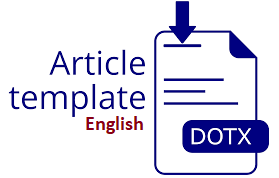Analisis Kualitas Website Menggunakan Metode Webqual dan Importance Performance Analysis (IPA) Pada Website Pondok Pesantren Al-Hidayah Pringsewu
DOI:
https://doi.org/10.30865/resolusi.v2i6.406Keywords:
Importance Performance Analysis (IPA); Information Quality; Service Interaction Quality; Usability; Webqual; WebsiteAbstract
The web has turned into an inseparable part of human existence in this computerized age. With the web, all the ideal data can be obtained effectively and quickly. However, the quality of the website needs to be evaluated to improve the information provided by the website. The purpose of this study was to analyze the quality of the website of the Al-Hidayah Islamic Boarding School. Website quality analysis using the Webqual method is a measurement of website quality based on end user perceptions and Importance Performance Analysis (IPA) is a technique for identifying the quality measurement attributes of the product. Based on the results of the Webqual Index calculation on the Al-Hidayah Islamic Boarding School website, it can be seen that the service interaction dimension gets the highest index value. While the information dimension (information) gets the lowest index value. Then the Importance Performance Analysis on the website there are several attributes that are in quadrant I which are the main priority for improving the quality of the website to increase user satisfaction, the information dimension is an indicator of timely information, relevant information. In the service interaction dimension, it is a safe indicator of personal information, feature facilities can be accessed properly, thus providing easy input or suggestions for the school.
Downloads
References
Internetworldstats, “Asia Internet Usage Stats Facebook and 2021 Population Statistics,” 2021.
I. Ahmad, A. T. Prastowo, E. Suwarni, and R. I. Borman, “Pengembangan Aplikasi Online Delivery Sebagai Upaya Untuk Membantu Peningkatan Pendapatan,” JMM (Jurnal Masy. Mandiri), vol. 5, no. 6, pp. 4–12, 2021.
S. Barnes and R. Vidgen, “An Integrative Approach to the Assessment of E-Commerce Quality. Journal of Electronic Commerce Research,” J. Electron. Commer. Res., vol. 3, no. 3, pp. 114–127, 2002.
D. Diana, N. David, and M. Veronika, “Analisis Kualitas Website Provinsi Bengkulu Menggunakan Metode Webqual 4.0,” J. Pseudocode, vol. V, no. 1, pp. 10–17, 2018.
Y. Firmansyah and U. Udi, “Penerapan Metode SDLC Waterfall Dalam Pembuatan Sistem Informasi Akademik Berbasis Web Studi Kasus Pondok Pesantren Al-Habib Sholeh Kabupaten Kubu Raya, Kalimantan Barat,” J. Teknol. dan Manaj. Inform., vol. 4, no. 1, 2017.
C. Irawan, “Evaluasi Kualitas Website Pemerintah Daerah Dengan Menggunakan Webqual (Studi Kasus Pada Kabupaten Ogan Ilir),” Sriwij. J. Inf. Syst., vol. 4, no. 2, pp. 488–502, 2012.
A. Mustopa, S. Agustiani, and S. K. Wildah, “Analisa Kepuasan Pengguna Website Layanan Akademik Kemahasiswaan,” vol. 18, no. 1, pp. 75–81, 2020.
S. Rahmatullah, D. S. Purnia, and R. Triasmoro, “Analisis Kualitas Website Sekolah North Jakarta Intercultural School dengan Metode Webqual 4.0,” Anal. Kualitas Website Sekol. North Jakarta Intercult. Sch. dengan Metod. Webqual 4.0, vol. Volume 19, 2019.
R. I. Borman, A. Rosidi, and M. R. Arief, “Evaluasi Penerapan Sistem Informasi Manajemen Kepegawaian (SIMPEG) di Badan Kepegawaian Daerah Kabupaten Pamekasan Dengan Pendekatan Human-Organization-Technology (HOT) FIT Model,” Respati, vol. 7, no. 20, pp. 1–18, 2017.
R. Napianto, Y. Rahmanto, R. I. Borman, O. Lestari, and N. Nugroho, “Dhempster-Shafer Implementation in Overcoming Uncertainty in the Inference Engine for Diagnosing Oral Cavity Cancer,” CSRID (Computer Sci. Res. Its Dev. Journal), vol. 13, no. 1, pp. 45–53, 2018.
M. Melinda, R. I. Borman, and E. R. Susanto, “Rancang Bangun Sistem Informasi Publik Berbasis Web (Studi Kasus?: Desa Durian Kecamatan Padang Cermin Kabupaten Pesawaran),” J. Tekno Kompak, vol. 11, no. 1, p. 1, 2018.
R. D. Gunawan, T. Oktavia, and R. I. Borman, “Perancangan Sistem Informasi Beasiswa Program Indonesia Pintar (PIP) Berbasis Online (Tudi Kasus?: SMA N 1 Kota Bumi),” J. Mikrotik, vol. 8, no. 1, pp. 43–54, 2018.
E. Diana and A. As’ad, “Analisa dan Perancangan Sistem Informasi Tracer Study Berbasis Web,” MEDIASISFO, vol. 11, no. 2, pp. 817–829, 2017.
S. Suliman, “Analisis Performa Website Universitas Teuku Umar Dan Universitas Samudera Menggunakan Pingdom Tools Dan Gtmetrix,” Simkom, vol. 5, no. 1, pp. 24–32, 2020.
E. Sutanta and K. Mustofa, “Kebutuhan Web Service Untuk Sinkronisasi Data Antar Sistem Informasi Dalam E-Gov di Pemkab Bantul Yogyakarta,” Tek. Inform. - STMIK Bandung, vol. 2, no. 3, pp. 20–26, 2012.
N. Y. Arifin et al., Analisa Perancangan Sistem Informasi. Batam: Cendikia Mulia Mandiri, 2021.
Bila bermanfaat silahkan share artikel ini
Berikan Komentar Anda terhadap artikel Analisis Kualitas Website Menggunakan Metode Webqual dan Importance Performance Analysis (IPA) Pada Website Pondok Pesantren Al-Hidayah Pringsewu
ARTICLE HISTORY
Issue
Section
Copyright (c) 2022 Yusra Fernando, Catur Apriyani, Donaya Pasha, Dedy Alamsyah

This work is licensed under a Creative Commons Attribution 4.0 International License.
Authors who publish with this journal agree to the following terms:
- Authors retain copyright and grant the journal right of first publication with the work simultaneously licensed under Creative Commons Attribution 4.0 International License that allows others to share the work with an acknowledgment of the work's authorship and initial publication in this journal.
- Authors are able to enter into separate, additional contractual arrangements for the non-exclusive distribution of the journal's published version of the work (e.g., post it to an institutional repository or publish it in a book), with an acknowledgment of its initial publication in this journal.
- Authors are permitted and encouraged to post their work online (e.g., in institutional repositories or on their website) prior to and during the submission process, as it can lead to productive exchanges, as well as earlier and greater citation of published work (Refer to The Effect of Open Access).















